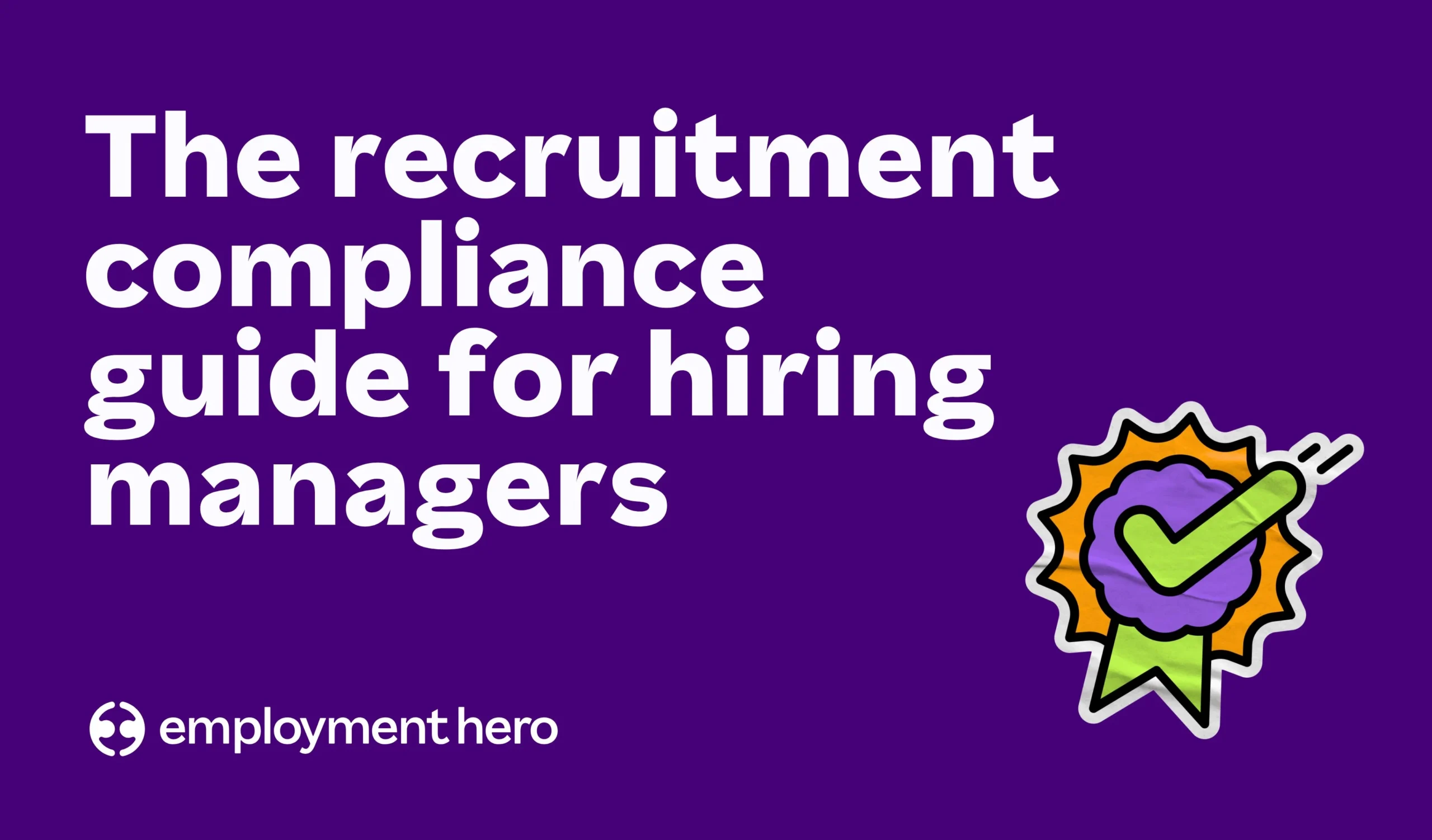75 Actionable Employee Pulse Survey Questions
Published
75 Actionable Employee Pulse Survey Questions
What is an employee pulse survey?
An employee pulse survey is a quick and regular survey that aims to gather feedback and gain insight from employees within a business. It’s referred to as a “pulse” survey because it provides a snapshot or “pulse” of your organisation’s overall employee engagement, satisfaction, and wellbeing.
Unlike traditional annual employee surveys, employee pulse surveys are conducted more frequently – either monthly or quarterly. These employee surveys consist of a small set of carefully crafted questions that cover different aspects of the employee experience, such as job satisfaction, work-life balance, communication, organisational culture, and career development. It’s all the factors that can shape how someone feels about their job.

What does an employee pulse survey measure?
The main purpose of an employee pulse survey is to collect timely feedback and identify trends or areas of concern within the business. It gives leadership and HR teams valuable insights into the employee experience, as well as direct feedback to help make informed decisions about improving employee engagement, morale and happiness levels. It can also help reduce staff turnover, and boost overall organisational performance.
But it’s not just that – it all feeds into your EVP (employee value proposition) too, which can help you attract top talent in your field. To dive deeper into what your employees really want, consider using our employee value proposition survey template.
How often should you do employee pulse surveys?
Determining the frequency of employee pulse surveys depends on various factors, including your business size, industry, and specific goals. And while there’s no one-size-fits-all approach, we think the following cadence has its own merits and ideal use case.
- Monthly pulse surveys create a dynamic feedback loop, allowing you to capture real-time insights and spot emerging trends. This frequency is ideal for fast-paced environments or organisations undergoing significant changes.
- Quarterly pulse surveys strike a balance between frequency and giving employees sufficient time to experience and reflect on organisational changes. It provides regular updates on employee engagement and sentiment, ensuring you stay connected to your workforce.
- Conducting pulse surveys twice a year is suitable for organisations with relatively stable work environments or limited survey administration resources. This frequency allows for tracking long-term trends and identifying areas for improvement while offering employees a chance to provide meaningful feedback.
- Annual surveys offer a comprehensive view of the employee experience over a longer period. While they may not capture real-time feedback, they can still provide valuable insights.
And then there’s ad-hoc surveys, of course. One-off pulse surveys can be used to gather feedback on specific topics or initiatives.
Pulse surveys are intrinsically flexible, and you can adapt and tailor them to your organisation’s needs and cadence preferences. Some organisations may prefer conducting surveys every two months for more regular updates, while others may opt for less frequent intervals – it’s all about finding what works for you and your business.
Whatever frequency you choose, the key is to be consistent and show your commitment to acting on the feedback received. Regularly communicating survey results and the actions taken based on employee input will foster a culture of transparency, engagement, and continuous improvement.

Should employee pulse surveys be anonymous?
When it comes to employee pulse surveys, maintaining anonymity is crucial for fostering a culture of openness and trust within your organisation. Which makes sense – anonymity empowers honest responses, enabling you to gather valuable insights and feedback that might otherwise remain hidden.
By ensuring anonymity, you create a safe space for your employees to express their honest opinions, concerns, and suggestions without fear of repercussions. It allows you to uncover valuable patterns, identify areas for improvement, and make informed decisions that benefit both your employees and the company as a whole.
By prioritising anonymity in your employee pulse surveys, you demonstrate your commitment to listening and valuing the voices of your team members.
How can the leadership team encourage participation in surveys?
Engaging staff effectively is often at the forefront of many leaders’ minds. But it doesn’t have to be a mystery. To boost survey participation, consider these strategies:
Be clear about your purpose
Explain the purpose and value of the survey, emphasising how it will drive positive change and benefit employees and the organisation.
Make it safe
Assure employees that their responses will remain anonymous, creating a safe space for honest feedback without fear of consequences.
Highlight the benefits
Showcase the benefits of participation which lead to potential outputs like improved policies, processes, and a better work environment that aligns with staff needs. This brings your staff directly into the decision-making process, which is democratic and empowering.
Keep it short
No one likes having their time wasted, no matter what level, role or position a person is in. Remember to keep the survey short and sweet, respecting employees’ time commitments. Clearly state the estimated completion time upfront.
Show your team you value their input
Have you ever been incentivised to give your opinion? It helps to know your opinion is worth something. Your staff are no different. Consider providing small rewards, recognition, or dial up the fun stakes and make it a competition to motivate participation and increase engagement.
Share results and actions
This one is important – communicate survey results and decisions taken. Sharing actions taken based directly on staff feedback demonstrates transparency and shows your employees that their input is valued. This boosts accountability at a leadership level and also has the sweet bonus of encouraging future participation.

What types of questions should you ask in an employee pulse survey?
In an employee pulse survey, it’s vital to include a well-rounded set of questions that cover various aspects of the employee experience. This includes:
- Assessing overall satisfaction
- Employee engagement
- Communication and feedback
- Leadership and management
- Work-life balance
- Professional development
- Diversity and inclusion
- Wellbeing and support
- Team collaboration
- Gathering suggestions for improvement
By mixing it up and incorporating a blend of both quantitative and qualitative questions, you can gain valuable insights into employee satisfaction, identify areas of strength, and pinpoint opportunities for growth and enhancement within the organisation.
How many questions should you include in a pulse survey?
When it comes to putting your survey together, you don’t want to use 75 questions all in one go.
The number of questions in a pulse survey depends on many factors, from what the survey’s purpose is, how deep you want to go to get insights, as well as the frequency of the surveys and the time employees can reasonably dedicate to completing it.
Generally, pulse surveys are designed to be shorter and more focused than comprehensive employee engagement surveys. It’s a pulse, after all. So they typically contain between 5 to 15 questions to ensure a high response rate and to maintain employee engagement throughout the survey.
The balance you’re looking to strike is between gathering enough information to make informed decisions, and respecting employees’ time constraints. That means you’ll need to prioritise the most critical areas for assessment, and include concise, impactful questions that generate meaningful feedback. Less is more in this case.

Metrics to measure the effectiveness of pulse surveys
To measure the effectiveness of pulse surveys, we think these three metrics are the ones to pay attention to.
1. Response rate
The response rate indicates the percentage of employees who completed the survey. A higher response rate generally suggests greater engagement and participation, which makes the data increasingly representative.
To calculate the response rate, divide the number of completed surveys by the total number of employees invited to participate, and multiply by 100.
2. Satisfaction score
Always include a question in the survey that directly measures overall employee satisfaction. This can be a rating scale or a single question asking employees to rate their satisfaction level.
Calculate the average satisfaction score to gauge the overall sentiment of employees. Monitoring changes in satisfaction scores over time can help identify trends and areas that require attention.
3. Action and follow-up
Measure the degree to which actions are taken based on survey feedback. Track the number of initiatives or improvements implemented as a result of the survey findings. This metric puts a value on your commitment to act upon employee feedback and drive positive change.
By monitoring these three metrics – response rate, satisfaction score, and action and follow-up – you can fully assess the effectiveness of pulse surveys. Win, win, win!
Taking action on employee survey responses
Once you have collected the survey results from an employee pulse survey, you need to think about taking appropriate actions to make the most of the feedback you’ve gleaned. In fact, this is essential. This is how you take the feedback you’ve received and transform it into meaningful actions that will enhance your organisation’s employee experience.
The first step is to thoroughly review and analyse the survey results
- Identify key themes, trends, and patterns within the data. Pay attention to recurring themes, areas of concern, and opportunities for growth.
- Consider both quantitative metrics and qualitative comments to gain a comprehensive understanding of the findings.
The next step will be to prioritise areas for improvement
- Identify the areas that require attention and improvement based on the survey results. Prioritise these areas based on their significance, urgency, and alignment with organisational goals.
- Develop action plans to address the identified areas for improvement. Involve relevant stakeholders, such as managers, HR teams, or cross-functional task forces, to collaborate on defining actionable steps, goals, and timelines.
- Prioritise the actions based on their impact and alignment with your organisation’s goals and values.
Then you need to communicate the results
- Transparently share the survey results with your employees. Ensure employees understand that their feedback has been heard and that actions will be taken based on their input.
- Provide a summary of the findings, highlighting the key insights, areas of strength, areas needing improvement, and the actions to be taken.
Lastly, use continuous feedback to close the loop
- Regularly assess the impact of the action plans and adjust them as needed.
- Monitor key metrics, gather feedback, and make necessary refinements to ensure the initiatives are effective in addressing the identified areas for improvement.

How can Employment Hero help improve employee engagement?
Regular pulse surveys are vital to growing businesses – feedback from employees provides valuable insights into their experiences, challenges, and suggestions for improvement. This feedback acts as a catalyst for positive change, allowing employers to address concerns, identify opportunities, and make informed decisions to enhance the overall employee experience. And let’s not forget that it drives positive company culture too.
Managing company culture can be challenging for businesses, especially if you don’t have the right tools and resources. This is where Employment Hero comes in.
Our platform offers a range of features that can significantly improve employee engagement, from communication and collaboration, to performance management and reward and recognition. We’re big on wellbeing and employee benefits because we know this is the key to positively impacting engagement and productivity. And pulse surveys are how you keep your finger on the pulse.
Ready to get a pulse check? Here’s the wrap-up.
Knowing how your employees feel is essential for creating an award winning workplace culture. But in order to get people to give their honest feedback, it’s important you ask the right pulse survey questions.
Questions like: Are you happy with your work-life balance? Are the employee benefits actually useful? Do you feel like you’re getting enough growth and development opportunities, or are there specific professional development opportunities you’d like to access? It’s questions like these that can make all the difference.
An important reminder is to not go overboard with the questions – the last thing you want to cause is survey fatigue from a long list of pulse survey questions. Keep it short and focus on the important points that truly matter. Ask the questions you should ask, and create an actionable plan from the answers. Share the results and show your team that you’re listening. Good luck!
Download the full list of employee pulse survey questions.
To further support your employees well being, explore our guide to boosting employee mental wellbeing.
Other helpful resources:
Related Resources
-
 Read more: Recruitment compliance guide for hiring managers
Read more: Recruitment compliance guide for hiring managersRecruitment compliance guide for hiring managers
Learn how to manage compliance when finding talent and interviewing candidates in your business.
-
 Read more: Hiring issues holding you back? The business owner’s guide to competing for top talent
Read more: Hiring issues holding you back? The business owner’s guide to competing for top talentHiring issues holding you back? The business owner’s guide to competing for top talent
Published Hiring great people is one of the most powerful ways to grow your business – but it can also…











